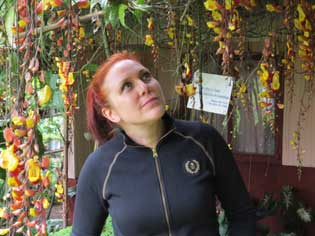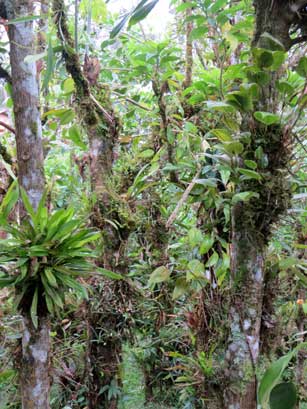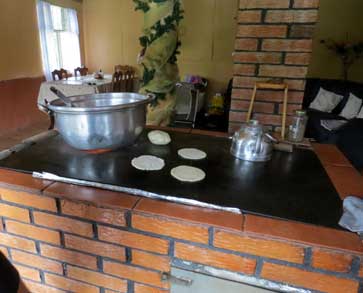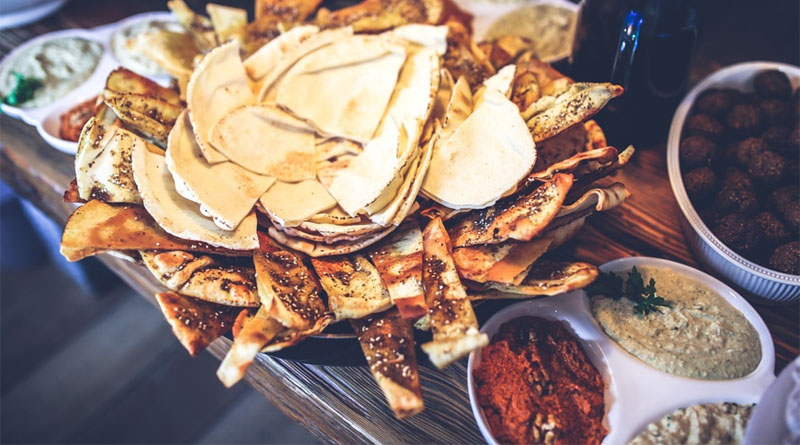TORTILLAS, ORCHIDS AND JOHN TUTTURO IN COSTA RICA
Tortillas, orchids and John Tutturo … all part of a fascinating cultural tour of Toro Amarillo, Costa Rica.
Let’s start with the name; translated it means Yellow Bull. Apparently someone said they saw a yellow bull here once, and despite the fact this is unlikely to be true, the moniker has stuck. But that’s not the full name of the town. Costa Ricans go in for long names – of their towns and their people. The full name is Los Bajos del Toro Amarillo de Alajuela – translated as town of the yellow bull in the district of Alajuela. My guide, in English, is known simply as Henry Porras, but give him his full Costa Rican name and you get Enrique Arturo Porras Fernandez. The two surnames are a combination of both his father’s and his mother’s surnames – this is not some double-barrelled affectation, but rather the traditional way of naming your children.
Costa Ricans are proud of their country and their traditions and the cultural tour is a good way to learn more about both.
Our local guide is Ronald (he was happy for me to stick with the one name – so let’s do that!) He bears an uncanny resemblance to a young John Tutturo and bounces around with undisguised enthusiasm. Our first stop is the orchid garden of Martin Porras.

Costa Rica has over 1800 species of orchid and this garden contains over 600 of them! Dozens of Guitite branches reach from the ground, with mosses, lichens, bromeliads and other epiphytes clinging to the soft bark. And of course orchids. Some are big and showy, others are tiny and without Ronaldo’s keen eyes, they would be easy to miss. We thread our way through the trunks, stopping to peer at an orchid that is so tiny we need a magnifying glass to appreciate it. With the twisted branches, the trailing mosses and the hidden flowers, the garden has an enchanted quality. If a gossamer-winged fairy were to dance among the plants right in front of me – somehow I don’t think I’d be surprised (or at least not as much I should be!)

The garden has been over 20 years in the making, and is testament to one man’s passion for these flowers. Perched on the banks of the Toro Amarillo River, with the cloud forests above you – the setting is as beautiful as the garden itself.
From there we drive into the tiny town centre. Ronaldo points out the colourful houses; vibrant turquoise, a deep ochre, bright blue, green, red… Costa Ricans like to paint their houses in bright, cheerful colours.
There is a tiny school, a police station (with its own gaol), two bars (one on either side of the police station), and, of course, a football pitch. No Costa Rican town is complete without a football pitch. In fact I doubt any Costa Rican would deign to live somewhere that didn’t have a pitch.
And oh yes, in a tiny hut, squashed between one of the bars the police station is the meeting room of Alcoholics Anonymous!
There’s also a restaurant with flowery table cloths, an Internet café (a very recent addition) and a tiny supermarket that Ronaldo enthusiastically shows me. He leaps around pointing out the bananas, the coffee, and the freezer full of meat. Very usefully he also points out how to choose a good brand of coffee. At first glance they all appear the same; foil bags of ground coffee. But look closer and read the ingredients list and you’ll see many of them contain sugar! Some, says Ronald, in a horrified whisper, don’t even tell you how much sugar they have added. Always makes sure it says 100% coffee he tells me seriously.
Next stop is the home of Dona Olga de Porras (Mrs Porras to you and me). Her daughter, and toddler granddaughter greet me at the door and usher me to the kitchen at the back. I am here for a lesson in making traditional tortillas. But before we start, it’s time for a cup of coffee – made the traditional way. The ground coffee is poured into a little bag and hung from a wood and wire contraption looking a bit like miniature gallows. The boiling water is poured through the coffee into a tin pot below. The result is a very fresh, very strong and slightly thicker liquor than I am used to – but Costa Ricans don’t go in for fancy flavours and mellow blends.
Feeling revived by this big shot of caffeine, the cookery class beings. Mrs Porras lays a range of bowls onto an orange and yellow plastic table cloth and starts to mix the flour and water with her hands. Within seconds there is a beautifully formed ball of dough in the middle of the bowl. This bit looked easy. Now the fun starts; she pulls off a chunk and laying it in her palm starts to turn and slap the mixture, pushing the heel of her hand into it as she flips it around. Within seconds she has created a perfect round of raw tortilla. The edges are smooth, the thickness even, the shape almost mathematically precise. This she pops onto the hot plate on the wood fired oven and within seconds it puffs up with hot air.

Now it’s my turn – after a lot of pulling, and hitting, and peeling it off my hand, and then squashing it again I have a sort of round shape with feathery edges. Apparently it will do. So we pop it onto the hot plate and, within seconds, it too has puffed up with hot air. I look back at the raw dough and estimate I have another 20 of these to do…my heart sinks just a little. But Mrs Porras has a secret… two pieces of wood joined by a hinge. Pop a piece of raw dough in here, fold the wood over (like closing a book), push hard and, hey presto, you have a nice round, even tortilla ready for cooking! The remaining 19 take just a few minutes. Which is handy as the smell is making us hungry.

Mrs Porras then fries some of her homemade cheese (well, she does run a tiny cheese shop) and we sit down to slabs of cooked cheese and fresh warm tortillas. Delicious. I don’t think I will ever be able to eat a ‘shop bought’ tortilla again. These tasted so much better they could have been a different food stuff altogether!
We may not have shared a language, or managed to say much to each other, but by sharing the preparation and eating of food we were friends for the afternoon and I definitely felt I’d experienced some genuine Costa Rican culture.
FACT BOX
Visiting Costa Rica – www.visitcostarica.com
Thank you to the wonderful El Silencio Lodge and Spa http://www.elsilenciolodge.com/ for hosting me.
ABOUT THE AUTHOR
Chantal Cooke is an award winning journalist and broadcaster with a passion for the planet. In 2002 she co-founded the award winning radio station PASSION for the PLANET and in 2009 Chantal was awarded London Leader in Sustainability status. Chantal also runs a successful communications agency: Panpathic Communications.

